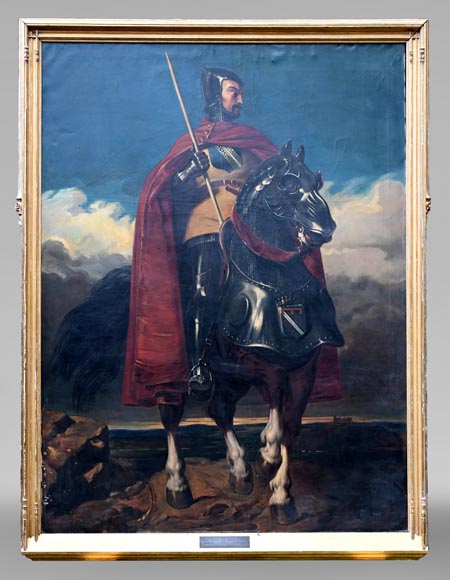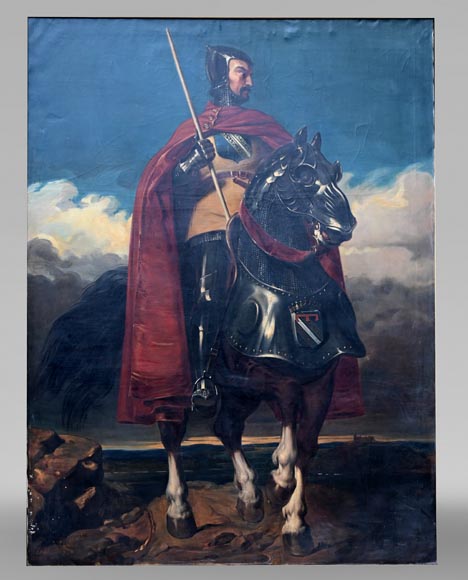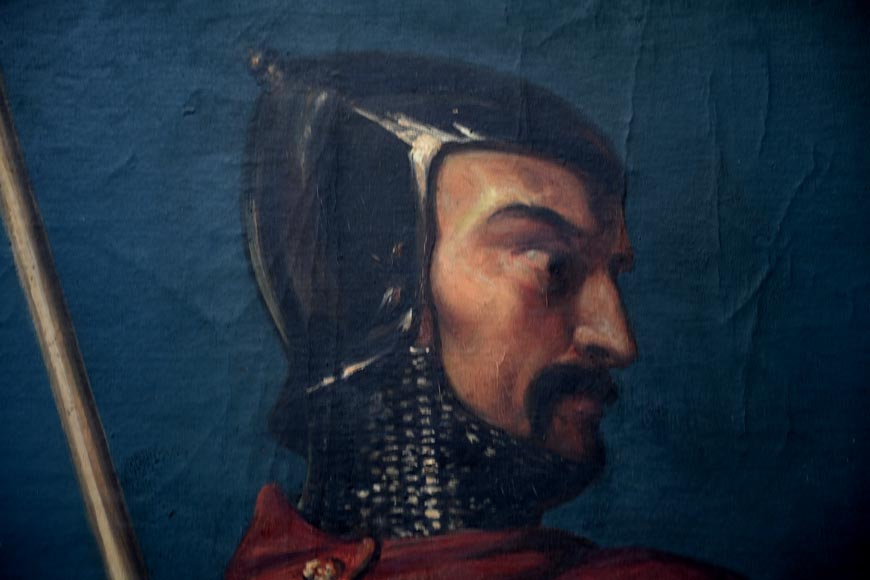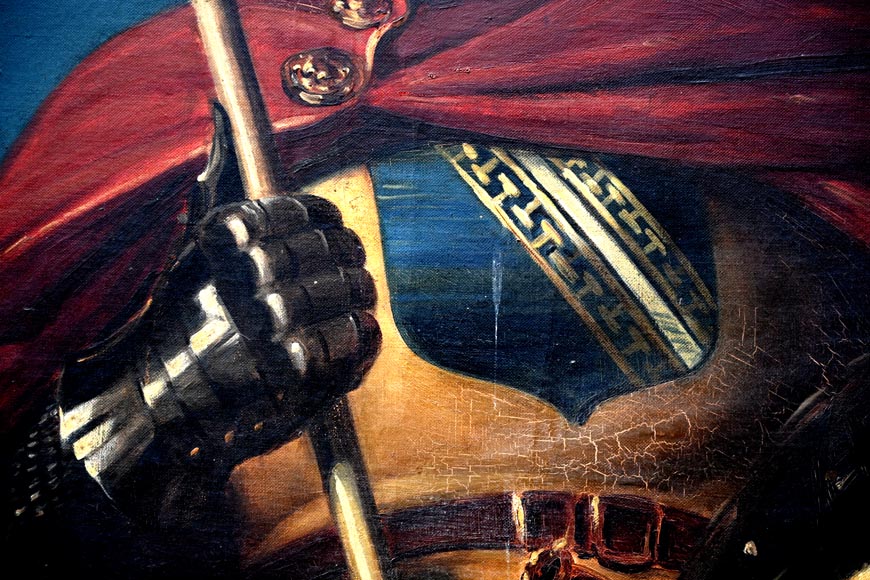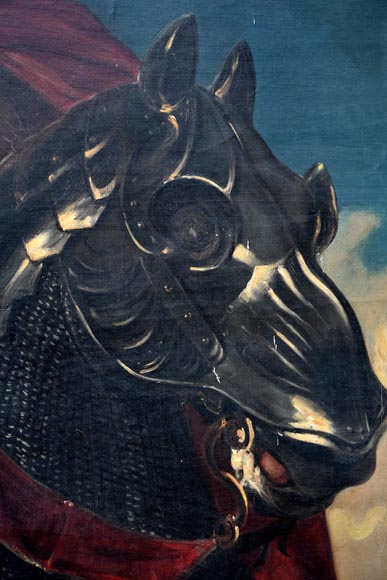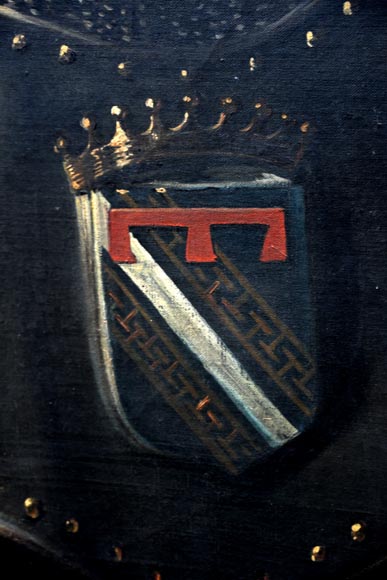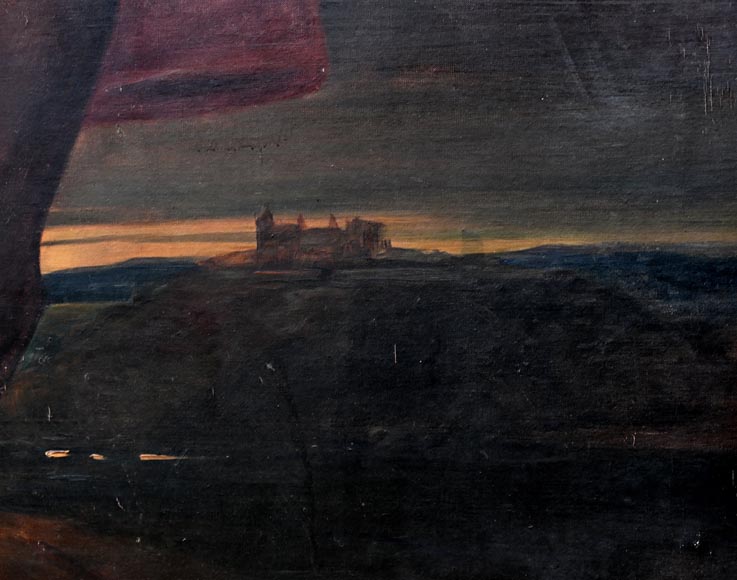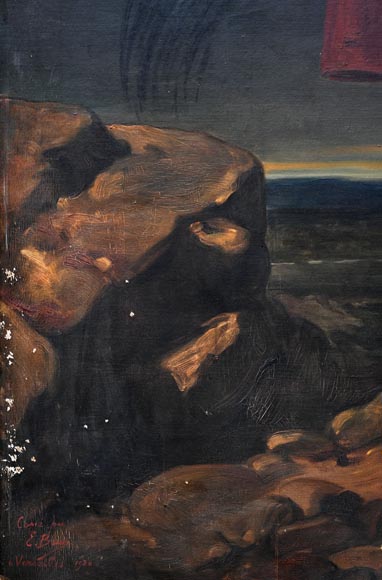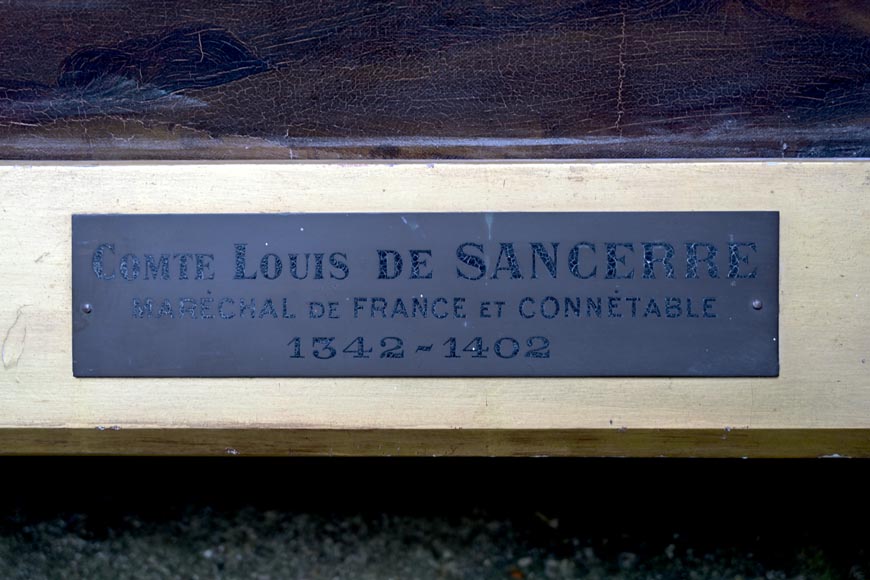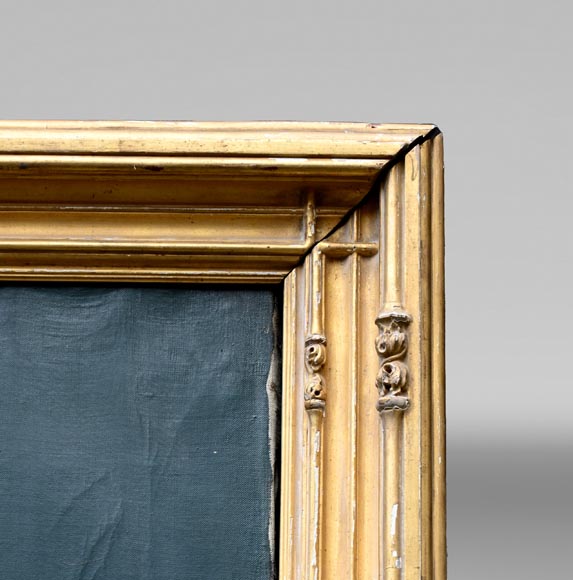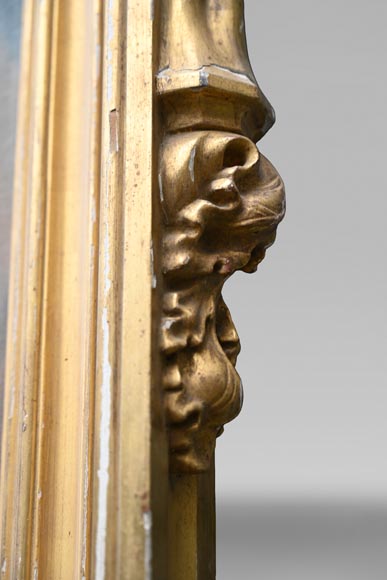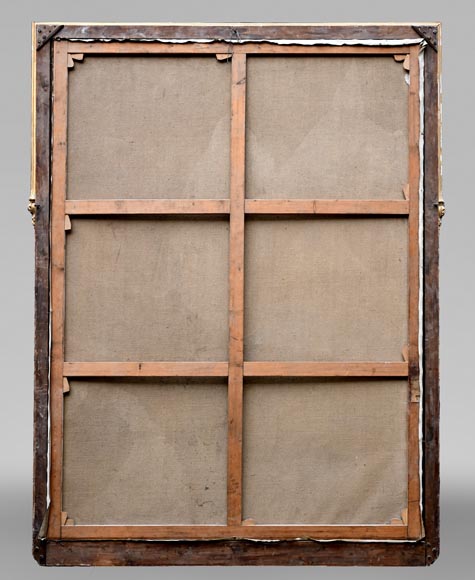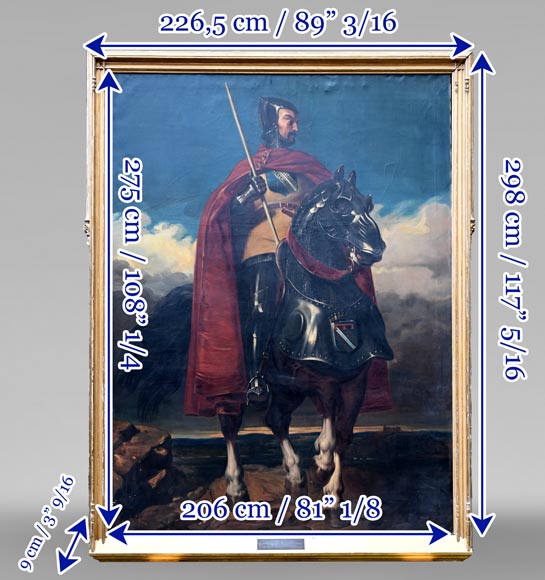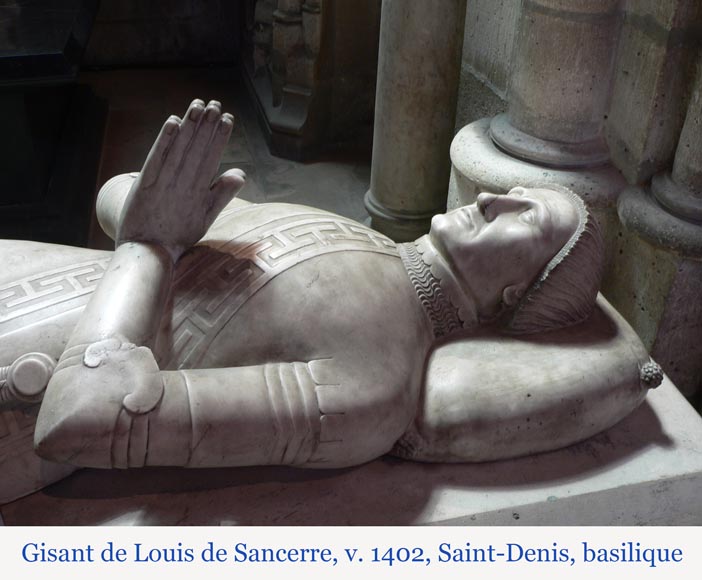Style Louis-Philippe / Ref.15499
E. BRUN after Jules-Claude ZIEGLER, Portrait of Louis de Champagne, Count of Sancerre, 1920
Dimensions
Width 89'' ⅜ 227cm
Height 117'' ⅜ 298cm
Depth: 3'' ½ 9cm
Origin:
France
Status:
Good condition
This portrait of the Count of Sancerre was made by E. Brun in 1920. It is a copy of the work by Jules-Claude Ziegler preserved at the Château de Versailles, as indicated by the inscription placed at the bottom left of the canvas.
The original portrait was commissioned for the Galerie Militaire at Versailles in 1834; upon its delivery, it was placed in the Hall of the Constables. Under the reign and initiative of Louis-Philippe (1773-1850), the former residence of the kings of France was transformed into a museum dedicated to “all the glories of France”. In this context, numerous works were commissioned to illustrate the political and military history of France, including this portrait.
The copy of the Versailles portrait was likely commissioned by the Sancerre family for their personal residence, the Château de Sancerre, where it was displayed.
The constable and his mount occupy the center of the composition. Very dignified, he turns his head to the left, as if his attention has been drawn there – a way for the painter to partially conceal his strabismus, as noted in the Chronicle of the Monk of Saint-Denis. He guides his horse with his left hand while holding a staff of office in his right. He is dressed in armor and chain mail, over which he wears a large red cape and a yellow tunic bearing his family’s coat of arms. The crest is also present on the barding covering the horse’s upper body, surmounted by a comital crown. The horse is shown in motion, its tail in the wind, imparting a sense of movement to the portrait. The scene unfolds against a rocky landscape extending to the horizon. The sky is heavy with clouds at the lower part, transitioning from dark gray to a lighter tone, culminating in a blue sky in the upper third of the canvas.
The copy is rigorously identical to the original, with two exceptions: the absence of the artist’s signature on the rock, replaced by the inscription, and the inclusion of a castle in the background. This was likely an express request by the commissioners of this painting: as it was intended to adorn the walls of the Château de Sancerre, it seemed fitting to depict the structure as an integral part of the count’s history.
Louis de Champagne, Count of Sancerre (1341/42–1402), was Lord of Charenton, Beaumetz (or Bommiers?), Menetou-Salon, and later Ambrault (1391). Having fought in numerous battles during the Hundred Years’ War, he was named Marshal of France in 1368 and distinguished himself in combat on many occasions. The chronicler Jean Froissart (c. 1337-c. 1410) described him as “a valiant man and a boldly steadfast knight” and “the finest ornament of French chivalry”. He also served as an ambassador to England in 1385, governor of Languedoc from 1390 to 1401, and finally Constable of France in 1397.
The Count of Sancerre was buried at the Basilica of Saint-Denis, where his effigy can still be seen today. This effigy, the closest temporal likeness of Louis de Champagne, was likely a source of inspiration for Jules-Claude Ziegler’s portrait. He is depicted here as constable, a title denoting the supreme commander of the king’s armies from the late 12th century, and as Lord of Sancerre, with the château in the background and his coat of arms included in the imagery.
This representation aligns with the 19th century’s documentary interest in French history, particularly in the depiction of armor. This historical passion extended into the 20th century, as seen in the creation of this copy, which was accompanied by a frame adorned with neo-Gothic cabbage-leaf moldings.
Informations
Price: on request
Recommended for you :
Dimensions:
Width: 420
Height: 253
Depth: 3
Dimensions:
Width: 65
Height: 195
Depth: 3
Dimensions:
Width: 77
Height: 110
Depth: 5
Dimensions:
Width: 51
Height: 61
Inner width: 40
Inner height: 49
Dimensions:
Width: 102
Height: 82
Depth: 10
Dimensions:
Width: 68
Height: 325
Dimensions:
Width: 178
Height: 129
Depth: 14
Dimensions:
Width: 227
Height: 161
Dimensions:
Width: 234
Height: 185
Depth: 11
Dimensions:
Width: 162
Height: 295
Depth: 14
Dimensions:
Width: 86
Height: 108
Dimensions:
Width: 122
Height: 240



